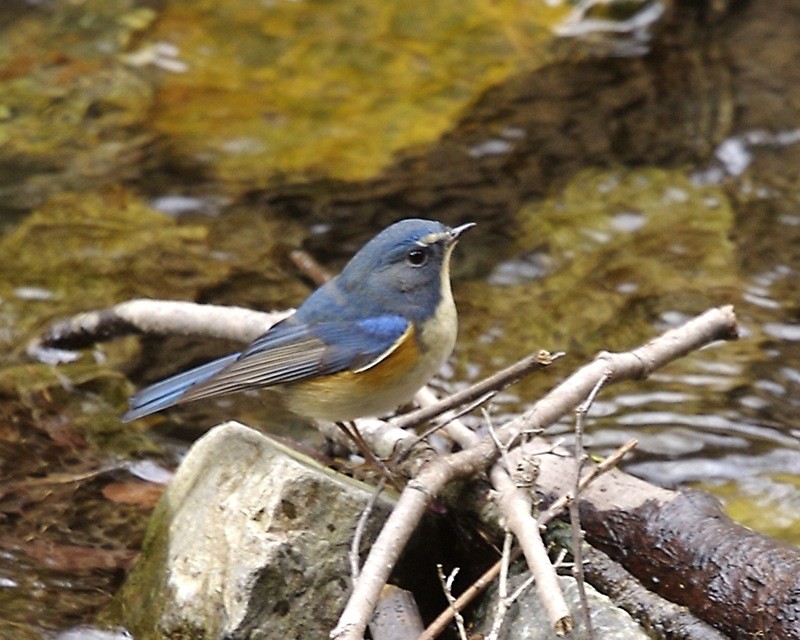Red-flanked Bluetail
A species of Bush-robins Scientific name : Tarsiger cyanurus Genus : Bush-robins
Red-flanked Bluetail, A species of Bush-robins
Botanical name: Tarsiger cyanurus
Genus: Bush-robins
Content
Description General Info
 Photo By Lip Kee , used under CC-BY-SA-2.0 /Cropped and compressed from original
Photo By Lip Kee , used under CC-BY-SA-2.0 /Cropped and compressed from original Description
At 13–14 cm long and 10–18 g weight, the red-flanked bluetail is similar in size and weight to the common redstart and slightly smaller (particularly with a slimmer build) than the European robin. As the name implies, both sexes have a blue tail and rump, and orange-red flanks; they also have a white throat and greyish-white underparts, and a small, thin black bill and slender black legs. The adult male additionally has dark blue upperparts, while females and immature males are plain brown above apart from the blue rump and tail, and have a dusky breast. In behaviour, it is similar to a common redstart, frequently flicking its tail in the same manner, and regularly flying from a perch to catch insects in the air or on the ground. The male sings its melancholy trill from treetops. Its call is a typical chat "tacc" noise. The nest is built on or near the ground, with 3–5 eggs which are incubated by the female. 
Size
13-15 cm (5-5.75 in)
Colors
Bronze
Gray
White
Blue
Orange
Nest Placement
Shrub
Feeding Habits
Red-flanked Bluetail predominantly consumes insects, exhibiting adept hunting skills through active foraging and occasional aerial sallies. This bird species has a preference for a varied insect diet, showcasing specialized feeding behaviors aligned with their ecological niche.
Habitat
Red-flanked Bluetail primarily resides in mature, mossy coniferous forests of the taiga and in mixed woodlands, often associated with old-growth spruce, birch, and rhododendrons. Habitats span from damp montane regions to subalpine zones with thickets and up to timberline in open birch areas. In winter, it migrates to warmer broadleaf evergreen forests with dense undergrowth and vine tangles.
Dite type
Insectivorous
General Info
Feeding Habits
Bird food type
Sounds
Call
Recording location: Japan
Song
Recording location: Japan
Species Status
Not globally threatened.
Scientific Classification
Phylum
Chordates Class
Birds Order
Perching birds Family
Old world flycatchers Genus
Bush-robins Species
Red-flanked Bluetail